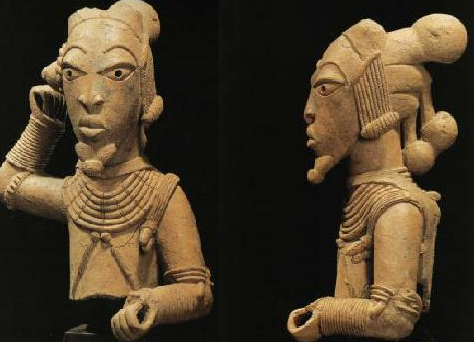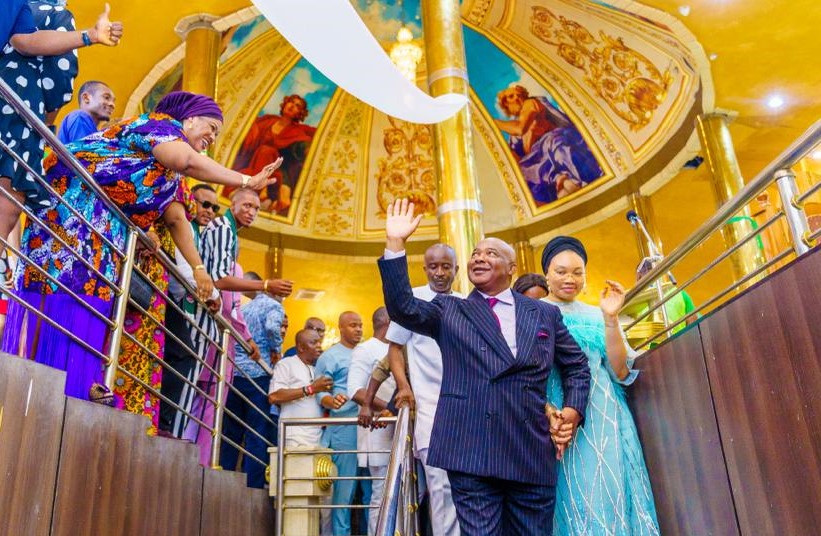BY MERCY TARTSEA ANSHASE AND MICHAEL FALOSEYI
On many occasions, opinions have been expressed on the fear of the possibility of some Nigerian cultures going into extinction. Moreover, studies have shown that languages and cultures worldwide are dead and forgotten. Such fears could be dismissed with nonchalance and shrugged off as, after all, what is the big deal about dying culture? Nonetheless, a more profound reflection informed us that our culture essentially defines who we are individually and collectively. Our culture is a crucial aspect of our civilisation and our prosperity.
As an expression of its importance, scholars and cultural aficionados identified the hierarchy and types of culture. This classification includes the high, popular, and everyday culture. The high culture is elitist. It includes the cinema house, classical music, poetry, and arts. Furthermore, Nigeria has them in abundance. Its earliest form includes the Benin Bronze, synonymous with the Benin Empire. It is one of the most resilient high cultures in Nigeria. The colonial authorities and their soldiers pillaged the Benin Art. The Benin artworks were explicitly produced for the royalty – the palace of the Benin Kingdon. It tells the story of the wealth, authority, and spirituality of the Kingdom.
Also in that mould is the Nok Art, which historically is the oldest and has lasted over 1500 years. The artworks are made from melted iron to cast various images, the most prominent being the Terracotta. Another of that generation is the Ife art, which is similarly produced for royalty. It speaks to the royalty and religion of the Ife Kingdom and the Yoruba history. Many of the products and symbols of this high culture have come under various forms of attacks. First, from the colonial authorities and its soldiers who stole many of the artefacts until recently when efforts are being made to recover them. Christianity and Islamic religions have tended to alienate the people from the high art further.
Relatedly, modernity complemented the attack on high art by first replacing it with cinema houses and the media, then replacing it with Siaseme Street and now Netflix. Suffice it to observe that some other contents of high art, like literature in prose and poetry forms, have withstood the test of time. They are personified by notable individuals and writers such as Chinua Achebe, Wole Soyinka, and Flora Nwankpa, among others, and, in contemporary times, the likes of Chimamanda Adichie.
Advertisement
However, popular culture is synonymous with ordinariness rather than elitist and commercialisation rather than community. Notwithstanding this notion of ordinariness about popular culture, an attempt to understand where to draw the line with the high culture and for a better understanding of popular culture as different from everyday culture has brought about some complexities.
In an attempt at a better appreciation of its authenticity, the question could be asked about who controls popular culture. A ready answer is that it is a set of shared beliefs, traditions, languages, and festivals combined to tell a people’s story. Herbert Gans 1974 distinguished between high culture and popular culture. Popular culture is not a culture of a people but of many different people. Popular culture is saturated with people’s doings, fashion, phones, TV series, radio programmes, etc. Popular culture can be seen from three dimensions: the organisation and consumption of media, entertainment – the creation of cultural standards and what originates from the people.
Popular culture is not just like a religion, but it includes religious activities: pervasive and inescapable. Popular culture can be viewed as interactive – it entails everyday interaction among people. It is the social realities that emerge as the outcomes of social actors’ interactions with one another. It includes our food, the hairstyle, dress sense and style and the music, to mention a few. While it may have been moderated in many forms through technology, evidence around us is not indicative that the Nigerian popular culture would die. Rather than for any fear of dying, much of the Nigerian popular culture, specifically the music, has continued to gain international status. The digital media are aiding the pervasiveness of the Nigerian popular culture. For instance, famous Nigerian musicians are ruling the world of entertainment. Significant events such as the World Cup and the International Association of Athletics Federation are spiced up with Nigerian music. Specifically, only last week, five Nigerian musicians – Burna Boy, Davido, Olamide, Asake, and Ay Starr- were listed for the 2024 Grammy Award, which will be held in February next year.
Advertisement
Digital media, with its addictive attribute, has aided the proliferation of popular culture not just in Nigeria but across the globe. Scholars of culture studies like Bilal Kolo and Mustafa Yagbasan, in their study of popular culture in Nigeria, thus concluded that we now live in a period portrayed by different, magnificent, addictive, and unremitting excitement in the circle of popular culture. Digital technology is facilitating the ease of spreading popular culture and has changed our world into one village square.
Notwithstanding the ambiguity in the boundary line with some elements of the high culture, the popular culture is identifiable with its attribute of commercialisation, the media razzmatazz, the mass appeal, marketing, and capitalism associated with it. It is inconceivable that the annual Durbar Festival of the Kano people or the Ojude Oba Festival of the Ijebu people of Ogun State would die, or the Igwe Festival in Onitsha, and the Osun groove in Osogbo would suddenly go into extinction. These festivals have assumed their own life, with some having United Nations recognition. Some of these festivals have both spiritual and social relevance. These are not indicative of a culture that could go into extinction. The commercial aspect of these festivals is in millions of naira, with many businesses thriving around them. The commercialisation aspects have essentially elevated or qualified them as popular art.
Relatedly, those aspects of the culture without the media hype, razzmatazz, and commercial content, yet generally practisedby the people, are the everyday culture. They include our languages, slang, and certain mannerisms that define us as a group. They include tales by the moonlight, the village square, and the open theatre. Suffice it to observe that while the popular celebrate consumerism, everyday culture passes down morality, tells our stories and inspires the younger ones to greater heights. Incidentally, everyday culture is fast disappearing, or is it changing forms? It is giving way to popular culture, which the Frankfurt school of thought has accused production of perpetuating capitalism’s stability and continuity. The village square has given way to the erection of cinemas, churches,ates or other forms of popular culture.
Conclusively, while popular culture is gaining popularity with all its vices, such as celebrating consumer fetishism and placing capitalism above morality, our everyday culture is quickly disappearing or changing formats.
Advertisement
For comments and reactions to this article – [email protected]; https://www.linkedin.com/in/michael-faloseyi-a22424168/
Views expressed by contributors are strictly personal and not of TheCable.
Add a comment






